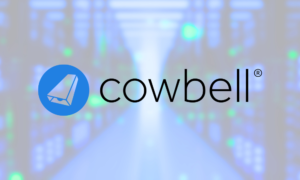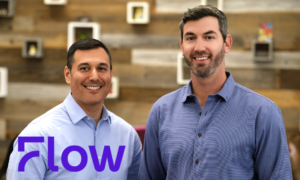Insurers will continue to face bottom line challenges due to rising inflation, low interest rates, increased regulation, plus increased risks from the pandemic, cyber and climate shifts that are already making an impact. These myriad issues joined with the tectonic forces of customers, technology and shifting market boundaries that we have discussed are driving foundational change to the insurance industry. The year 2022 is already feeding us game-changing scenarios that will accelerate change and create significant opportunities for those prepared to meet the demands of a new generation of dominant buyers, changing risks and rapid adoption of technology by customers.
The viability of the insurance industry is vitally connected to these customers. If we lose touch with them, both current and future, we lose business. Here are key trends you must be prepared to respond to in 2022 to meet the demands of a fast-changing customer and marketplace.
Millennials and Gen Z as the dominant buyer (individuals & business owners) will shift insurer loyalty.
Millennials and Gen Z are now the dominant buyers for insurance. They do not follow the traditional life and purchase patterns set by older generations. They are new ground. They have different insurance needs and greater expectations. In our latest research, we found they have shifted in the types of insurance products needed, increased desire of value-added services and expectations for personalized underwriting, leveraging new data sources including IoT devices. These shifts will drive demand for new, innovative products and services. Some highlights:
- Trend: Millennials & Gen Z are clear-cut leaders in the use of connected/smart home devices like thermostats, smoke/CO detectors, video doorbells and home security devices/services, outpacing Gen X & Boomers up to 63 percent.
Implication: Demand for IoT-based insurance that includes value-added services to help reduce or eliminate risk will intensify.
- Trend: Millennials & Gen Z expect to be in different jobs (45%) and working remotely (40%) over the next 3 years and 25% will start a new business, continuing the transient aspects of this generation.
Implication: This creates new demand for employee benefits to be flexible and portable and the need for insurers to develop relationships with employees directly to keep them as customers as their lifestyle changes.
- Trend: The younger generation is keenly interested (80%) in pricing based on driving behavior and miles driven. They are also interested in services that provide real-time information on driving safety and performance, keeping their vehicle safe and maintained, maintaining license and registration renewals, and knowing the market value of their vehicle.
Implication: The demand for UBI auto insurance, as well as new value-added services will redefine the competition, customer loyalty and market leaders.
- Trend: Use of digital payment apps grew with Millennials & Gen Z using Apple Pay/Samsung Pay at 53 percent, company apps (Amazon, Starbucks) at 73 percent, digital wallets like Zelle and Venmo at 68 percent and Bitcoin at 25 percent.
Implication: In order to align to this new generation’s use of money, insurers must support a broad array of digital payment options—both for paying premiums as well as paying out claims.
Digital Transformation will focus on faster, better, and smarter customer engagement.
The rapid adoption of digital technologies for shopping, payments and banking by home-bound customers has led to an upset in the balance of power between entrenched incumbents and new challengers in InsurTech and FinTech. Like the compressed and accelerated changes in customer behaviors, the magnitude of the shifts in market power seen during the pandemic are accelerating.
Customers are driving the digital shift, creating for insurers an “outside-in” view, where they must move away from a transaction focus to create holistic, compelling experiences. Insurance companies must reinvent themselves and deliver customized products and highly personalized services to meet new expectations from customers and keep in step with new digital leaders.
More importantly, the desire for a holistic customer experience—where digital offerings bring together other products and services to help customers manage their lives—has intensified. Leveraging data with AI/ML to know, assess and engage customers is crucial for “smart customer engagement.” Likewise, “better engagement” that will bring together a full view for customers across their insurance products, value added services and non-insurance products is increasingly expected—but often not delivered. This leaves a gap between customer expectations and what insurers are delivering—shifting alliance and loyalty to insurers who can meet these expectations.
Just consider these two interesting approaches:
- Google “Plex” checking and savings accounts directly integrate into the Google Pay app; Google cloud services includes cyber insurance from Munich Re and Allianz.
- Sofi, an online lender and bank, now offers access to insurance from Ladder Life, Lemonade and Gabi as well as other financial services across life, health, wealth, and wellness.
Undertaking digital transformation begins with customer-centricity. A true customer-focus will drive insurers to deliver the capabilities that create great customer experiences and generate brand excitement. To do so, you need to bring together next-gen core insurance systems, digital experience platforms and an ecosystem of other digital capabilities, such as chat bots, artificial intelligence and new data sources. The ability to channel these capabilities requires the adoption of a modern architecture that supports easy, rapid integration through microservices or APIs running in the cloud to drive speed to implementation, speed to market and speed to value, at scale.
Next Gen leaders see the market and technological trends as a many-fold opportunity for insurance. Now they have the evidence they need to incorporate new sources of data, reach new market segments, offer innovative new products that are necessary and demanded by customers…creating faster, better, and smarter customer experiences.
Embedded Insurance becomes the next battleground to acquire and retain customers.
In this digital era of insurance, nearly every insurance process is rapidly becoming digital and frictionless, including buying. The benefit of adapting to this dynamic is that we move from needing to “sell” people on purchasing insurance, to introducing insurance that is ready to be “bought” seamlessly at the point of need, creating a scalable, sustainable business model.
This is where embedded insurance thrives. It’s an extremely effective way to overcome the decades-long burden that has plagued the industry: Insurance is sold, not bought. Embedded insurance completely changes this paradigm. Embedded insurance bundles coverage or protections within the purchase of a product, service or platform. That means the insurance product is not sold to the customer ad hoc, but is instead provided as a native feature. With it, insurance is no longer sold, because it is bought as a part of something else.
Embedded insurance has a growing market presence with new players and through partnerships between insurers and other industries, including GM, Ford, Tesla, SoFi, Petco, Outdoorsy, Airbnb, Uber, Intuit, Zipcar and its adoption continues to accelerate. It is estimated that for P&C, embedded insurance could account for over $700 billion in premiums by 2030, or 25 percent of the total market worldwide. If we include aspects of life and health coverage, embedded insurance could create over $3 trillion in market value for those who enable it.[i]
As noted by a venture capitalist: “Google, Microsoft, Amazon, Wal-Mart, and Tesla in insurance. Toothbrushes that help underwrite dental products. Individual and family health programs that are sponsored and subsidized by insurers. Hearing about and buying policies through the apps and people we engage with the most. All of these and other facets of embedded insurance reflect an ocean of new innovation and excitement in the industry. Ultimately, if we believe that more options are better, leading to quality policies at lower prices rather than coverage we don’t need, embedded insurance will drive the most important change to how we feel about and deal with insurance.”[ii]
The real value of embedded insurance … is a sustainable business model, where instead of perpetually fighting for prospects and leads, we are perpetually making insurance easier and more appealing to buy. Imagine the market reach and optimized business model that can challenge the status quo.
Technology and innovation redefine leaders.
Anyone would agree that innovation and disruption are related topics. Innovation deals with creating an entirely new approach that adds value to something. Disruption deals with accepting the reality that something new will likely change our current approach.
Leaders distinguish themselves with a stronger focus on initiatives instrumental to creating new business models, expanding distribution channels, entering new markets, adding value-added services and developing new products by leveraging technology as a foundation and catalyst for innovation. From next-gen SaaS core to AI/ML, digital ecosystems, low code/no code platforms, to new digital solutions, technology is beginning to reshape the market.
Jim Gillard, Executive Vice President & COO, AM Best, sums this up succinctly. “Structural shifts—demographic, technological, economic and environmental—are redefining the insurance industry. Innovation can be away for an insurer to rise above these challenges…As innovation becomes more pervasive, insurers that don’t innovate can expect to find themselves at a disadvantage through adverse selection and worsening operating efficiencies.”[iii]
Leaders are differentiating themselves in the use of technology to fundamentally change the business operating model and innovate – two key aspects tracked by AM Best in their innovation ratings.
Last year, our Strategic Priorities 2021 research found a widening gap between Leaders and others with a gap of 102% and 28% for Laggards and Followers respectively over the next three years. This gap was nearly in alignment with AM Best mid-year assessment where the gap between prominent/leader to minimal was 133 percent and to moderate/significant was 27 percent. We expect this gap to continue.
Yes … technology and innovation are redefining insurance leaders.
FinTech Influences InsurTech: Future Role of Insurers
Banking and securities rather than insurance have traditionally led the financial services sector in technology and innovation. In 2015, InsurTech emerged from FinTech with a bang, driving innovation and the use of technology. In 2022, we will begin to see an even greater influence of FinTech on InsurTech, redefining the future role of insurance within the broader financial service market. A few areas to consider:
- Demand for financial well-being across all financial products will rise as people navigate new work, financial, lifestyle, risk, asset accumulation and retirement expectations. To respond to this demand, new FinTechs and other businesses will provide a broader array of financial products and services across insurance, wealth and banking to their customers, creating new business models that bring together different offerings for an overall customer experience.
- Changing trust levels in financial services, including insurance, have shifted due to new brands and experiences. Companies that enable white-label or cobranded financial services through partners can build on the increasing trust in other brands to distribute their products.
- The adoption of next gen technology that accelerates digitization, including automation and APIs, and ability to scale puts embedded finance/insurance within reach for companies. The “as a service” infrastructure solutions and partnerships will serve their massive customer bases. Insurers will need “as a service” capabilities to play.
To meet changing customer demands and to remain competitive where industry boundaries are fading away, development of “as a service” solutions will become an essential competitive advantage to beat current and future competition, allowing them to penetrate deeper and more broadly.
For decades, the creation and evolution of insurance markets and products unfolded at a slow and steady pace. Insurance and other industries stayed within their swim lanes. Insurers’ technology, data and processes were adapted to take advantage of these opportunities—sometimes through technology updates, extensive customization or through new technology. But today, this business model and technology are unresponsive to market shifts or opportunities.
One thing is for sure: the insurance landscape has changed exponentially over the last seven years due to InsurTech and it has accelerated the last two years due to the pandemic. We now have a new generation of dominant buyers who look at everything differently and will put change into a higher gear—looking to embedded insurance, new customer experiences, new payment options and much more.
Technology and innovation will be mandatory to adapt and survive. Are you ready?
Source: Insurance Innovation Reporter








